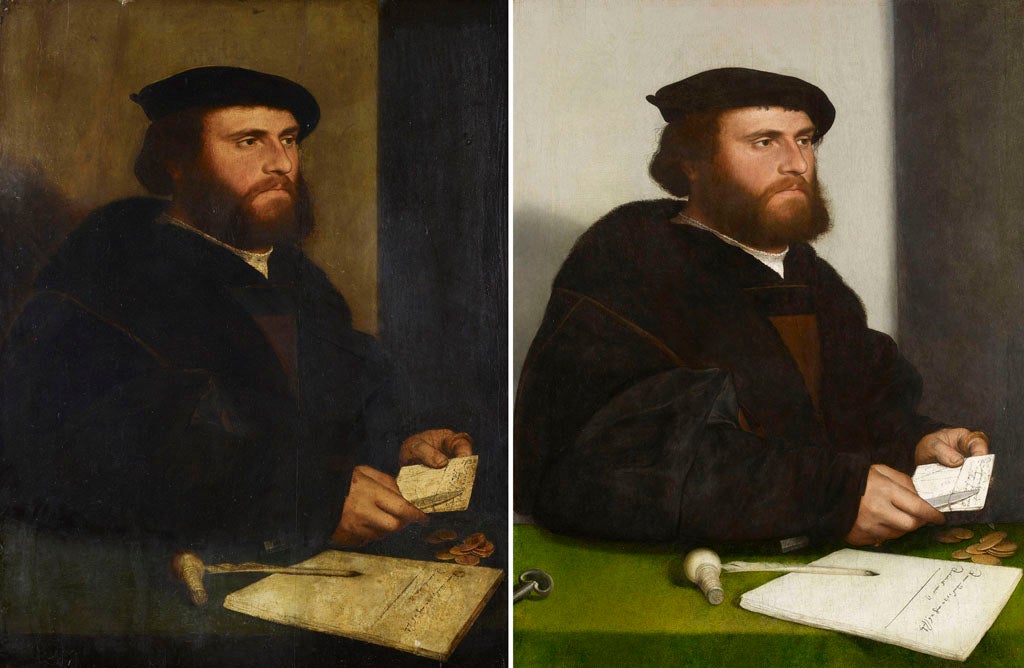Old Master reveals new image
A Holbein painting goes on show with its fabric and identity both restored

For 400 years, he has been buried beneath layers of grime. A two-year restoration project and careful detective work may have finally revealed the identity of the man featured in a portrait by Hans Holbein the Younger, the favourite painter of Henry VIII.
Hans of Antwerp has belonged to the royal family since at least 1639, when it was recorded as hanging in Charles I's Chair Room at Whitehall. The painting was more than one hundred years old by then and its history had been a chequered one. The panel on which it is painted had at some point been smashed into three parts and then poorly restored. It was this botched job that covered up key details, including an actual key that conservators have discovered on the table to the left of the sitter.
Confusion over the identity of the sitter seems to have stemmed from an erroneous reading of the letter on the table in the picture, which is dated 26 July 1532. In 1874 art experts thought the subject was the goldsmith Hans of Antwerp, who worked for Henry VIII and was a close friend of Holbein, witnessing his will in 1543. However, in the 20th century, doubts about the sitter's identity emerged, with details in the painting, including his costume, suggesting that this Hans of Antwerp was more likely to be a merchant.
After conducting X-rays and removing layers of grime and varnish, conservators from the Royal Collection Trust have concluded that he was indeed a merchant. The painting is one of seven surviving portraits produced by Holbein between 1532 and 1533 of German merchants of the Hanseatic League.
It is one of 27 works by Holbein that will go on display in an exhibition next month at the Queen's Gallery, Buckingham Palace. Lucy Whitaker, the exhibition's curator, said: "The man is in fact a German merchant, perhaps sharing a name with the well-known goldsmith. Conservation of the painting has brought us tantalisingly close to solving the mystery of the sitter's identity."
Claire Chorley, a conservator, said: "It was incredibly exciting to rediscover details that had been lost within the painting for so long. We even uncovered a metal key lying on the desk that had previously been completely invisible."
Holbein was born in Augsburg, Germany, in 1497. During the 1520s, he visited the English court and in 1537 he painted perhaps the most famous depiction of Henry VIII, which has been much imitated.
He is probably best known for his 1533 work The Ambassadors, which hangs in the National Gallery in London. It features a distorted skull, a symbol of mortality, which changes in perspective when viewed from the side. The fascination the painting arouses has made it one of the gallery's most visited pictures.
Join our commenting forum
Join thought-provoking conversations, follow other Independent readers and see their replies
Comments
Bookmark popover
Removed from bookmarks